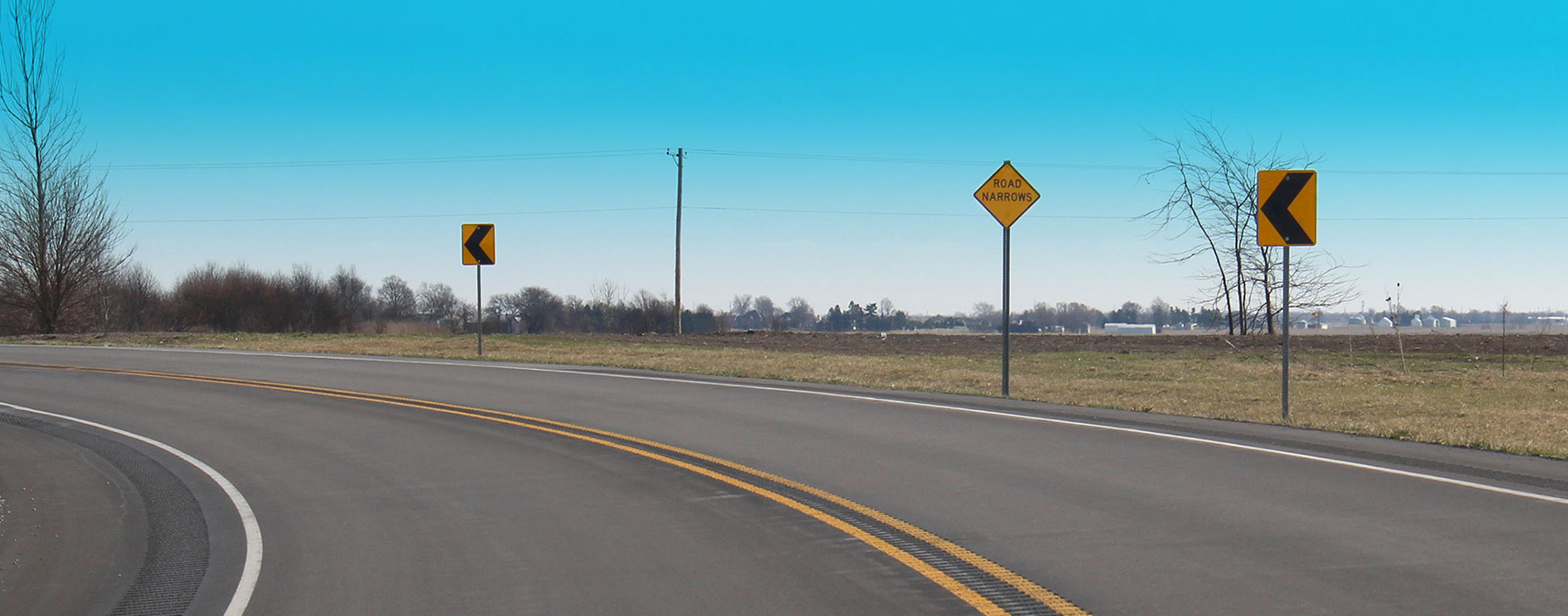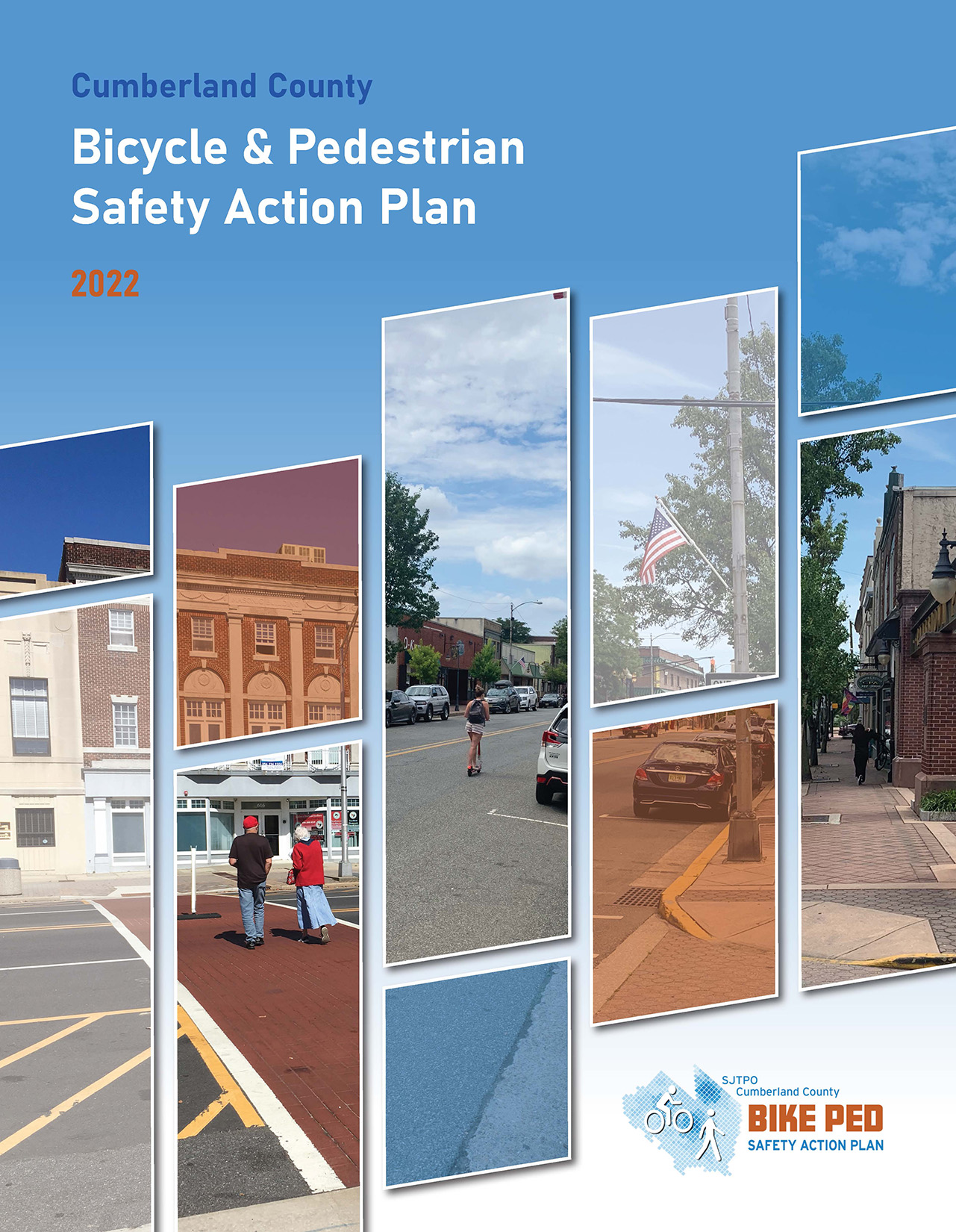
Award-Winning Safety Projects Feature EDC Innovations
The 2023 National Roadway Safety Awards honored public agencies for safety achievements that are helping move the United States toward zero deaths and serious injuries on the Nation’s roadways. The biennial competition, which is jointly sponsored by FHWA and the Roadway Safety Foundation, also provides an opportunity to share these successes with others so the practices can be replicated nationwide.
Following are examples of winning projects that employed safety innovations championed by FHWA’s Every Day Counts program, including data-driven safety analysis (DDSA), reduced left–turn conflict intersections, high-friction surface treatments (HFST), and the Safe Transportation for Every Pedestrian and Focus on Reducing Rural Roadway Departures initiatives. Visit the Roadway Safety Foundation’s webpage for a full list of winners and honorable mentions.
Reducing Intersection Crash Risk
The Acadiana Planning Commission (APC), an economic development district serving several parishes in Louisiana, used a data-driven approach to address fatal and serious-injury crashes occurring due to drivers running through the back of T-intersections. APC and Louisiana Department of Transportation and Development (DOTD) staff analyzed crash and other data to identify T-intersection locations with a high likelihood of run-through roadway departure crashes. The DOTD then installed signage, redundant and oversized stop signs, transverse rumble strips, and/or flashing beacons at the terminal roadway’s approach. The locations where these improvements were implemented saw a reduction in run-through intersection crashes of at least 50 percent, with the majority of locations seeing a complete elimination of this crash type.
The Florida Department of Transportation (FDOT) demonstrated that increasing pavement friction treatment (HFST) at intersections can reduce crash risk by helping motorists stop more quickly and retain better control. As part of a pilot project, FDOT installed HFST at three signalized, urban intersections in Tampa to study how much it would reduce improper stopping behavior, such as vehicles stopping in crosswalks. FDOT’s analysis of the three study sites showed that HFST reduced the overall rate of improper stopping by 11 to 31 percent. An FDOT news release noted that the findings are significant because between 2013 and 2022, about 27 percent of traffic fatalities and 35 percent of serious injuries statewide occurred at intersections.
The Minnesota DOT used community engagement tools such as videos to boost widespread J-turn deployment by raising awareness of safety benefits.
Credit: Minnesota Department of TransportationThe Minnesota DOT (MnDOT) implemented widespread use of J-turn intersections that have significantly reduced the severity of crashes on high-speed divided highways. J-turns, also known as restricted crossing U-turns, modify the direct left-turn and through movements from cross-street approaches. These intersections simplify decision-making for drivers and minimize the potential for higher severity crash types. Following the success of its first J-turn installation in 2010, MnDOT has built J-turns at more than 80 intersections, mostly on divided rural expressways. A 2021 MnDOT evaluation found a 69-percent reduction in fatal and serious-injury crashes at those intersections.
Improving Bicyclist and Pedestrian Safety
The South Jersey Transportation Planning Organization (SJTPO) developed a plan to prioritize making roads and intersections safer for cyclists and pedestrians in rural Cumberland County, NJ. The SJTPO used a comprehensive approach involving DDSA and input from local officials, stakeholders, and the public to prioritize locations with the greatest safety needs for cyclists and pedestrians and select appropriate countermeasures. The resulting Cumberland County Bicycle and Pedestrian Safety Action Plan helped local officials secure Federal funding to design and implement safety improvements in six busy corridors in three cities. The $400,000 cost of developing the plan yielded $32 million worth of federally funded projects that will enhance crosswalk visibility, shorten intersection crossings, and narrow roads to slow vehicular traffic.

Cumberland County’s Safety Action Plan helped advance multiple bicycle and pedestrian safety projects on local roadways in New Jersey.
Credit: South Jersey Transportation Planning Organization and Cumberland County, NJProactive Funding Approaches for Low-Cost, Effective Safety Measures
The California DOT (Caltrans) piloted a program allowing its districts to install standalone safety enhancements more quickly than through traditional capital project delivery. In the first two fiscal years of the Highway Maintenance 4 (HM-4) Safety program, Caltrans added $21.5 million annually to its maintenance budget for implementation of Proven Safety Countermeasures such as high-visibility crosswalks and curve warning signs. The program allowed Caltrans to complete safety enhancements in 4,540 locations, exceeding the pilot’s goal by more than 1,000.
The Virginia DOT received an honorable mention for its use of systemic analysis to fund lower-cost but more widespread safety projects aimed at preventing traffic fatalities and serious injuries. Traditionally, VDOT made spot safety improvements in response to crashes occurring at a specific site. Under the systemic approach, a method championed by the EDC DDSA initiative, VDOT evaluates a variety of factors that contribute to crashes, including road design, traffic patterns, and development that attracts pedestrians or cyclists, then applies those findings to the statewide system of roads and intersections to identify those with similar, potentially dangerous conditions that need correcting before a crash occurs.
—MORE INFORMATION
Visit the Roadway Safety Foundation webpage for details on all of the winning projects and honorable mentions.
Disclaimer: The U.S. Government does not endorse products or manufacturers. Trademarks or manufacturers’ names appear in this document only because they are considered essential to the objective of the document. They are included for informational purposes only and are not intended to reflect a preference, approval, or endorsement of any one product or entity.
Except for the statutes and regulations cited, the contents of this document do not have the force and effect of law and are not meant to bind the States or the public in any way. This document is intended only to provide information regarding existing requirements under the law or agency policies.
Recommended Citation: U.S. Department of Transportation, Federal Highway Administration - Washington, DC (2024) Innovator Newsletter, March/April 2024, Volume 17 (101). https://doi.org/10.21949/1521775


